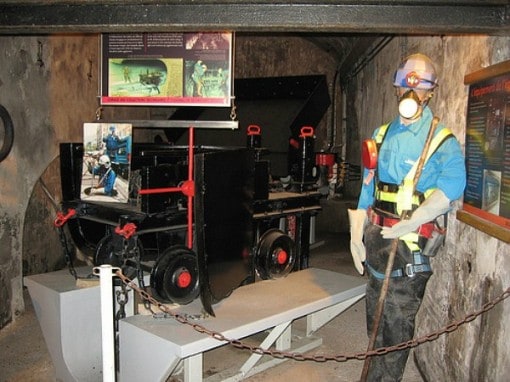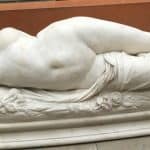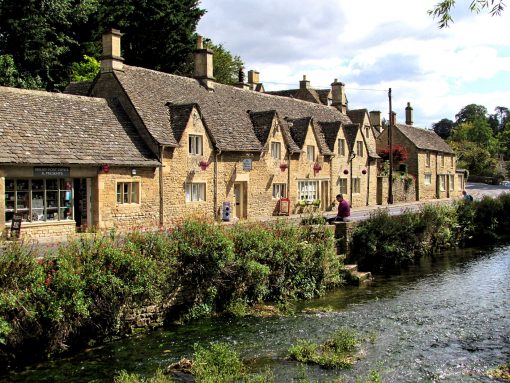The Louvre, the Eiffel Tower, Notre Dame, museums, culture, gardens, and art. . . and the list goes on. They are, after all, the usual suspects on any visitors list to Paris. And rightly so. In fact, putting Paris and sewers together would seem to be a bit of an oxymoron. But stick with me. You might decide you want to see a different side to this well-known city. The underground side.
A visit to the Paris sewers
If you’ve ever fancied getting into the belly of a city and seeing what makes it tick, a trip to the Paris sewers is one way you can do just that. It’s not an all day attraction. An hour tops will see you going from start to finish, with most people done in 30 to 40 minutes. Why so short? Well the area of the sewer that’s open for viewing is only a small portion of the 1,300 miles of pipes that criss-cross under the city. It’s a dedicated area that’s kept clean and safe so that visitors can get a chance to see how it all works.
How it works once you’re underground
Originally built in the 1200’s, the Paris sewers are not a new tourist attraction. The first group of intrepid travelers are thought to have gone down in the late 1800’s, where they boarded a locomotive-drawn wagon to make their way through the underground pipes. The wagon was later replaced with a boat to get you from pipe A to pipe B, but today it’s all about your own feet as you walk through the channels that are part of this unusual museum.
If you’re wondering how real the experience is likely to be, be warned that this is a working sewer. Yes, the area you’ll be in is just for visitors, but the surrounding tunnels and waterways are all the real deal – and they come with the odors that are an inevitable part of cleaning up the waste of a city with ever growing demands. If you’re not a fan of strong smells, it’s a good idea to take some Vick’s or something similar that you can pop under your nose to mask the aroma.
Inside the museum
Besides smells, the museum gives you plenty to see as you make your way through the marked channels. There are photos, displays and signs along the channels detailing the history of the sewer along with all the jobs that need to be carried out to keep it functioning. Some of the jobs definitely make you stop and think about what an essential role goes on here on a daily basis that we never normally get to see. Think: making sure the channels remain clean, or rescuing lost objects that have accidentally fallen down the plughole or drain.
The channels themselves are interesting once you realize how the layout works. They are, quite literally, a mirror of what you see above ground in Paris. Underneath each road is a corresponding sewer channel. The size of the channel reflects the size of the road overhead. And they are even given the same name as the road that runs above them. Just go and grab a street map of Paris and you’ve basically got a pretty good map of the sewer layout below.
Who should visit this unusual museum?
This is a great museum if you have older kids and you want them to get a better understanding of what it takes to make a city run effectively while keeping all its citizens healthy. It’s not a good choice for smaller children, however, simply because you’ll need to keep a constant eye on them to make sure they don’t put their hands somewhere they’re not supposed to be. It’s also a good choice if you’re into history, or if you’d like to see something that’s just a little bit different from all the usual tourist attractions on offer in Paris.
As well as the above, there’s one more fact behind these underground channels that may give you the motivation to take a Paris sewer tour. They’re part of the inspiration for the musicals the Phantom of the Opera and Les Miserables. In the case of the Phantom of the Opera, the sewers beneath the Paris Opera House are where the Phantom made his home, and it’s how he came to know and fall in love with Christine, the beautiful chorus girl. In Les Miserables, the author of the book, Victor Hugo, brings the medieval sewers in Paris to life as they become a main part of the plot in this famous story. Who knows? Maybe you’ll find your own muse down in the tunnels that are such an essential part of Paris.
Open hours and prices
The museum is open, at the time of writing, every day apart from Thursday and Friday. The museum is also closed on Christmas Day and New Year’s Day. If you happen to be in Paris in January, check directly with the museum as they close for 2 weeks during this month for maintenance.
From October to April the opening hours are 11 am to 4 pm while from May to September they are 11 am to 5 pm. Prices are €4.10 for adults, or €3.30 for children aged from 5−16. Children under 5 enter for free. If you’re planning on doing a lot of sightseeing in Paris, consider purchasing the Paris Museum Pass as it will get you into a lot of places at either a reduced rate or for free. Holders of the pass get into the sewer museum for free.
Getting to the museum
The French name for the museum is the Musée des Égouts de Paris and the signs that mark the location are pale blue and white so quite easy to spot. The entrance is at street level near the Alma Marceau metro stop. When you leave the station, cross over to the Left Bank of the river Seine and then turn left at the Quai d’Orsay. See this map for more information.
Have a great trip!
Photo credit: Dylan JC via flickr
You might also enjoy
Honor has lived in Japan for 10 years and traveled extensively in Asia, South America and Europe, as well as some areas in the USA. Her favorite reasons for travel are to get a peek inside a culture through visits to local events and festivals, and learning more about the history and people of a place. Then there’s always food. Of course! And the journey itself is just as important a part of her adventures. Honor’s top three travel destinations are Japan, Uruguay, and Jordan.









Pingback: Carnival of Cities for 29 June 2011 | Sheila's Guide To The Good Stuff
Fascinating post – I love stories of people travelling into the infrastructure of cities. Gives a nice idea of what it takes to maintain civilisation!
I couldn’t agree more Matthew : ) Without that never seen infrastructure we’d all be in a very different place right now… or not here at all.